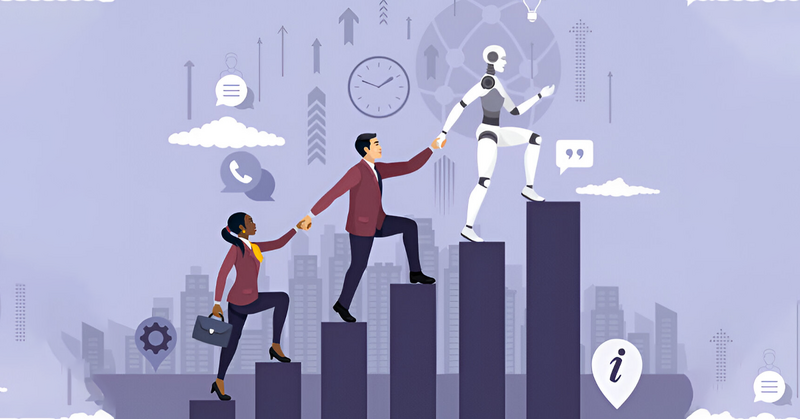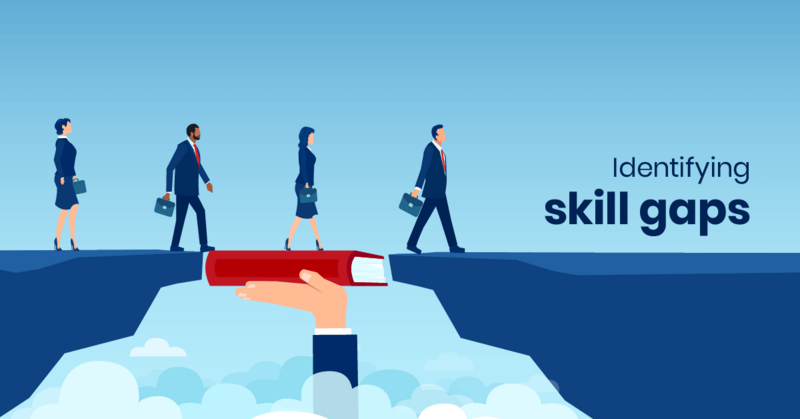Artificial Intelligence (AI) is reshaping the world at an unprecedented pace, influencing various sectors and redefining the landscape of the job market. From automation to augmented intelligence, AI's impact on employment is multifaceted, bringing both challenges and opportunities. In this blog, we will explore how AI is transforming job markets, the potential risks it poses, and the opportunities it creates for the future workforce.

The Transformation of Job Roles
1. Automation and Job Displacement
One of the most significant impacts of AI on the job market is automation. AI-powered systems can perform repetitive tasks with greater efficiency and accuracy than humans. This has led to the displacement of jobs in sectors such as manufacturing, retail, and customer service. For instance, automated checkout systems in supermarkets and AI-driven chatbots in customer service are replacing human roles. According to a report by McKinsey, up to 800 million jobs worldwide could be automated by 2030, affecting a substantial portion of the global workforce.
The shift towards automation is not new, but the acceleration driven by AI technology is unprecedented. Routine tasks such as data entry, basic accounting, and even some aspects of legal work are increasingly being handled by AI. This efficiency gains can lead to significant cost savings for businesses, but they also mean that many workers will need to find new roles as their previous jobs become obsolete.
2. Creation of New Job Categories
While AI is automating certain tasks, it is also creating new job categories. Roles such as AI specialists, data scientists, and machine learning engineers are in high demand. These positions require advanced technical skills and expertise in AI technologies, highlighting a shift in the types of skills needed in the job market. According to LinkedIn’s Emerging Jobs Report, roles related to AI and data science have seen exponential growth in recent years.
Beyond the technical sphere, new roles are emerging in areas such as AI ethics, AI policy, and AI strategy. These positions involve understanding and navigating the implications of AI technologies, ensuring they are developed and implemented responsibly. Additionally, there is a growing need for professionals who can bridge the gap between AI developers and end-users, translating complex AI capabilities into practical applications.
3. Augmentation of Human Abilities
AI is not just about replacing human labor but also about augmenting human capabilities. In fields like healthcare, AI assists doctors in diagnosing diseases more accurately. In finance, AI algorithms help analysts predict market trends. This augmentation enables professionals to focus on more complex and creative aspects of their work, enhancing productivity and job satisfaction.
In creative industries, AI tools are being used to generate new music, art, and literature, offering new ways for artists to express themselves. In education, AI-driven personalized learning platforms are helping teachers tailor their instruction to the individual needs of each student, improving learning outcomes. This symbiotic relationship between humans and AI can lead to a more innovative and efficient workforce.

Potential Risks and Challenges
1. Skill Gap and Workforce Displacement
As AI continues to evolve, there is a growing concern about the skill gap in the workforce. Many workers may find their skills obsolete and face challenges in transitioning to new roles. This calls for significant investments in reskilling and upskilling programs to help workers adapt to the changing job landscape. Governments, educational institutions, and private sector companies need to collaborate to provide continuous learning opportunities.
The World Economic Forum estimates that by 2025, 50% of all employees will need reskilling. This reskilling is not just about technical skills; it also includes soft skills such as problem-solving, creativity, and emotional intelligence, which are harder to automate and increasingly valued in the AI-enhanced job market.
2. Economic Inequality
The benefits of AI are not evenly distributed, leading to potential economic inequality. High-skilled workers and those in tech-savvy regions are more likely to benefit from AI advancements, while low-skilled workers and those in less developed areas may face greater risks of job displacement. Addressing this inequality requires policies that promote inclusive growth and equitable access to education and training.
The concentration of AI development in certain geographic regions, such as Silicon Valley, exacerbates this inequality. Workers in these regions have better access to high-paying AI jobs and the training needed to acquire them. To mitigate this, governments need to invest in AI infrastructure and education in underrepresented areas, ensuring a more balanced distribution of AI benefits.
3. Ethical and Social Implications
AI's impact on job markets also raises ethical and social concerns. Issues such as data privacy, algorithmic bias, and the ethical use of AI in decision-making processes need to be addressed to ensure that AI technologies are used responsibly and fairly. For instance, biased AI algorithms can lead to unfair hiring practices or unequal access to services.
The development and implementation of AI must be guided by ethical principles. This includes transparency in AI decision-making processes, accountability for AI-driven outcomes, and the protection of individual rights. Organizations such as the IEEE and the European Commission are working on establishing ethical guidelines and standards for AI, but widespread adoption and enforcement of these standards are necessary.

Opportunities for the Future
1. Emphasis on Lifelong Learning
The rapid pace of AI development underscores the importance of lifelong learning. Workers need to continuously update their skills and adapt to new technologies. Educational institutions and employers must collaborate to create flexible learning pathways that accommodate the evolving needs of the workforce. Online learning platforms, bootcamps, and corporate training programs are becoming increasingly important in this context.
Lifelong learning also involves fostering a growth mindset, where individuals are encouraged to view challenges as opportunities for development. This mindset is crucial in a world where technological advancements are continually reshaping the job market. Companies can support this by creating a culture of continuous learning and providing resources for professional development.
2. Enhancement of Human-Centric Roles
AI's ability to handle repetitive and mundane tasks allows humans to focus on roles that require creativity, emotional intelligence, and complex problem-solving. Jobs in fields such as education, healthcare, and creative arts are likely to see growth as they involve skills that AI cannot easily replicate. For example, teachers, nurses, and artists bring uniquely human qualities to their work that are essential for success in these fields.
Human-centric roles are also essential in managing and working alongside AI systems. This includes jobs in AI supervision, where human judgment is necessary to monitor and intervene in AI operations. These roles ensure that AI systems function as intended and that any issues are promptly addressed.
3. Innovation and Entrepreneurial Opportunities
AI opens up new avenues for innovation and entrepreneurship. Startups and businesses can leverage AI to develop novel products and services, driving economic growth and job creation. The AI revolution also encourages a culture of innovation, where individuals are inspired to explore new ideas and opportunities.
Entrepreneurs are using AI to tackle complex problems in areas such as healthcare, environmental sustainability, and urban planning. For example, AI-driven health diagnostics tools are improving patient outcomes, while AI-based traffic management systems are reducing congestion and pollution in cities. These innovations not only create jobs but also contribute to solving some of the world’s most pressing challenges.
Conclusion
The impact of AI on job markets is profound and multifaceted. While it presents challenges such as job displacement and economic inequality, it also offers significant opportunities for innovation, job creation, and the enhancement of human capabilities. To navigate this transition, it is crucial for policymakers, educators, and businesses to collaborate in fostering a resilient and adaptable workforce. By embracing the changes brought about by AI, we can ensure a future where technology and human potential are harmoniously integrated, leading to a more prosperous and equitable society.
AI is a powerful tool that, if harnessed correctly, can lead to significant advancements in various sectors and improve the quality of life for many. However, it is essential to address the challenges it poses to ensure that its benefits are widely shared. With thoughtful planning and proactive measures, we can navigate the AI-driven transformation of job markets and create a future that works for everyone.
Newsletter to recieve
our latest company updates
Comment